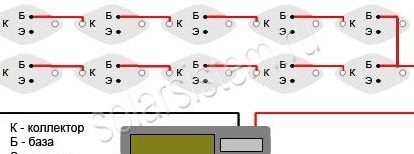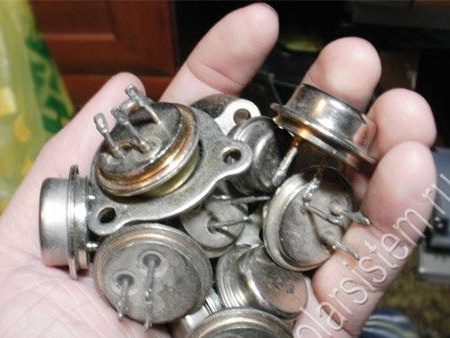
People who are addicted to radio business over time accumulate quite a lot of different electronic parts, among which may be old Soviet transistors in a metal case. As radio components, they have long been outdated due to their large size, but they can be used for a different purpose: as a solar battery. True, the power of such a battery comes out quite small in relation to its size, and is suitable only for powering low-power devices. But you can still collect it as an experiment and for fun.
To convert the transistor into a solar battery, it is first necessary to cut off the cover from it. To do this, the transistor is gently clamped in a yew by the rim on the body and a hacksaw is cut off the lid. You need to do this carefully so as not to damage the crystal and thin wires inside the transistor.
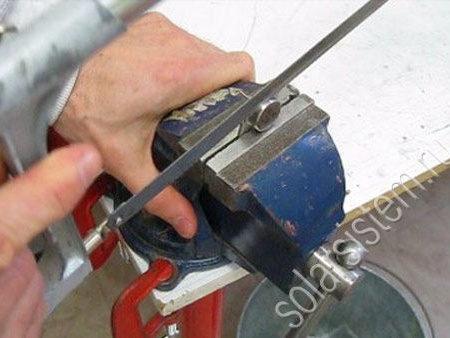
After that, you can see what is hiding inside:
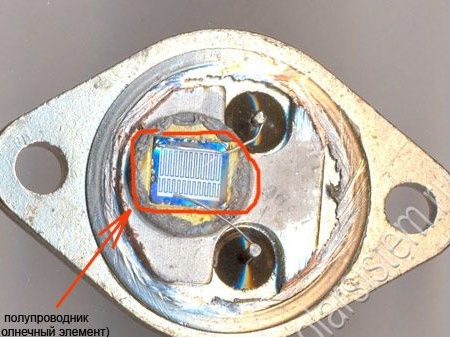
As you can see in the photo, the crystal is not large enough in comparison with the case of the transistor, and it is he who will convert the solar energy into electrical energy.
Next, you need to direct the light to the crystal and measure with the tester what conclusions we get the highest voltage possible. Its value, of course, depends on the power of the transistor and the size of the crystal.
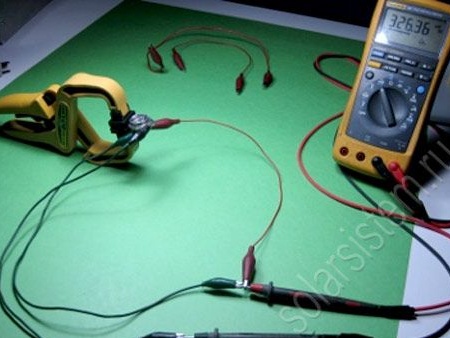
Here is the table of measurements given by the author on the example of the KT819GM transistor:

After the measurements, you can start assembling the solar battery to power the calculator. To obtain 1.5 volts, it is necessary to collect five transistors in series, while the collector will be a minus, and the base will be a plus.

To mount the transistors, a piece of thin plastic was used, with holes pre-drilled under the legs. After installing the transistors in place, a connection is made from each other, according to the above scheme:
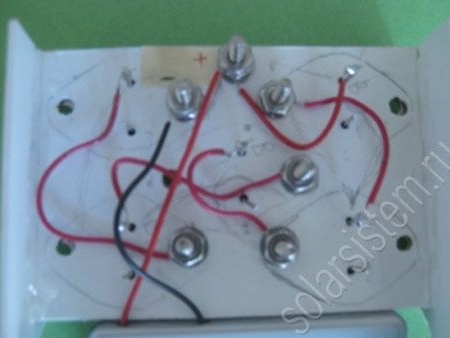
As the experiment showed, on the street, in sunlight, the calculator worked well, but it definitely lacked energy in the room, and at a distance of more than 30 centimeters from the incandescent lamp, it refused to work.
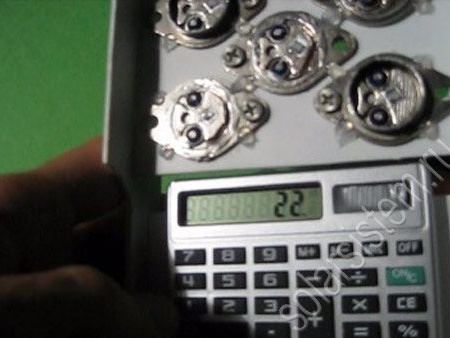
To increase the battery power, it makes sense to connect five more of the same transistors in parallel.
